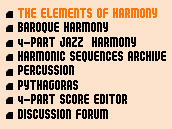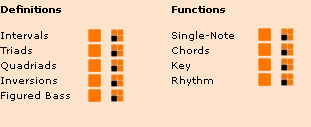


The Elements of Harmony > Rhythm (in-depth)


Rhythmic Embellishment
We will take the first 5 bars of a Bach chorale (BMV 437) to illustrate how rhythmic variety can
add interest and complexity to a harmonic progression. Consider the following 4-part rhythmic
progression, each part played by a different percussion instrument:

The metre is duple/simple, since each measure contains two rhythmic events (hence duple),
each one divided into 2 parts (hence simple).
We now assign notes to each part, outlining a harmonic progression as defined by the Figured
Bass shown below the staff. (Note: this is the basic harmonic structure of Bach's BMV 437).

Now observe how Bach subdivided the individual beats in the progression, creating greater rhythmic
interest.

This rhythmic complexity is achieved by introducing passing tones, suspensions, embellishments, and rhythmic displacements.
The following examples show how the addition of these four elements leads, by stages, to Bach's final version.Introducing passing tones:

Introducing suspensions:

Introducing embellishments:

Introducing rhythmic displacements:

Adding further passing notes:

Note that in some cases, rhythmic displacements are the equivalent of suspensions (bars 2 & 4).Note further that in the yellow example, the passing notes in bar 4 are simply inverted.
Interestingly, this chorale breaks two fundamental rules, in the interest of achieving a desired melodic and rhythmic contour:
(i) the 7th in bar 2 does not descend to the 3rd of i;
(ii) parallel 5ths occur between tenor and bass in bar 4;
Now listen to the entire BMV 437 Chorale:
. This rhythmic complexity is sustained throughout the piece.
The Elements of Harmony | Baroque Harmony | 4-Part Jazz Harmony | Harmonic Sequences Archive | Percussion | Pythagoras | 4-Part Score Editor | Discussion Forum